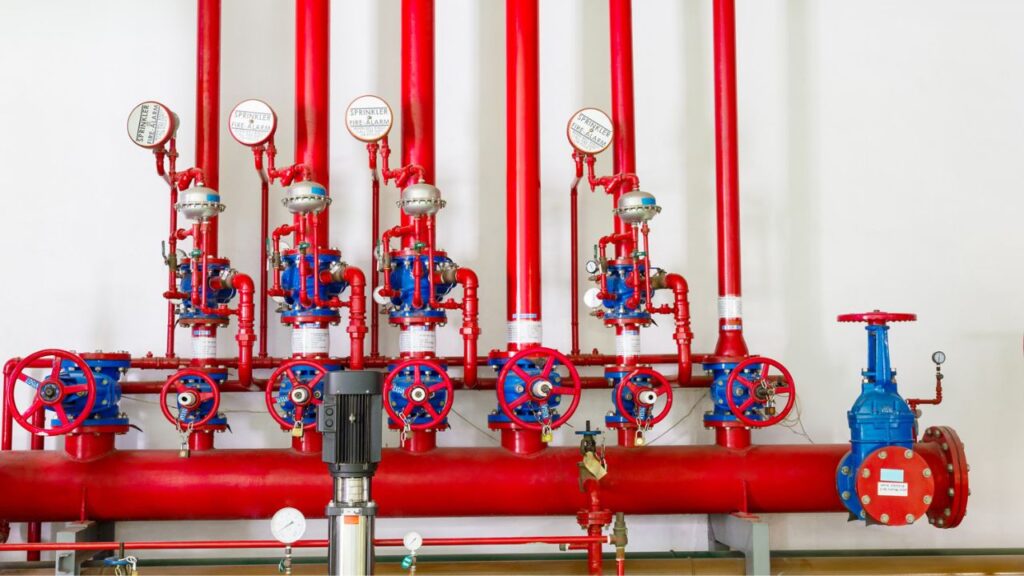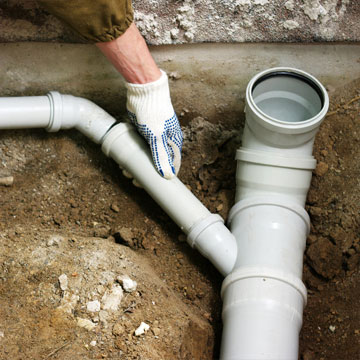How The Anatomy of Your House's Plumbing System Matters
How The Anatomy of Your House's Plumbing System Matters
Blog Article
Each person is bound to have their own individual perception when it comes to Plumbing Installation 101: All You Need to Know.

Understanding exactly how your home's plumbing system functions is vital for each home owner. From providing clean water for drinking, food preparation, and bathing to securely eliminating wastewater, a well-kept pipes system is important for your family's wellness and comfort. In this detailed overview, we'll discover the complex network that makes up your home's plumbing and offer pointers on maintenance, upgrades, and taking care of common concerns.
Introduction
Your home's pipes system is greater than just a network of pipes; it's an intricate system that ensures you have access to clean water and effective wastewater elimination. Understanding its parts and how they collaborate can assist you prevent expensive fixings and make certain everything runs efficiently.
Fundamental Elements of a Pipes System
Pipelines and Tubing
At the heart of your plumbing system are the pipelines and tubes that carry water throughout your home. These can be made from numerous materials such as copper, PVC, or PEX, each with its advantages in terms of toughness and cost-effectiveness.
Components: Sinks, Toilets, Showers, and so on.
Fixtures like sinks, bathrooms, showers, and tubs are where water is made use of in your home. Comprehending just how these fixtures connect to the pipes system aids in diagnosing troubles and planning upgrades.
Valves and Shut-off Factors
Shutoffs regulate the flow of water in your plumbing system. Shut-off valves are essential during emergency situations or when you need to make repair work, enabling you to separate parts of the system without interfering with water circulation to the entire house.
Supply Of Water System
Key Water Line
The major water line attaches your home to the municipal water or an exclusive well. It's where water enters your home and is distributed to various fixtures.
Water Meter and Pressure Regulator
The water meter procedures your water use, while a stress regulatory authority makes certain that water moves at a secure stress throughout your home's pipes system, preventing damage to pipes and fixtures.
Cold Water vs. Hot Water Lines
Understanding the distinction in between cold water lines, which supply water directly from the main, and hot water lines, which carry heated water from the water heater, helps in troubleshooting and planning for upgrades.
Drainage System
Drain Pipes Piping and Traps
Drain pipelines bring wastewater far from sinks, showers, and bathrooms to the drain or septic tank. Catches protect against sewage system gases from entering your home and additionally catch debris that might cause clogs.
Ventilation Pipes
Air flow pipelines permit air right into the drain system, avoiding suction that could slow down drain and trigger traps to vacant. Proper air flow is crucial for preserving the stability of your plumbing system.
Significance of Appropriate Drain
Guaranteeing proper drainage avoids back-ups and water damage. Regularly cleansing drains pipes and preserving traps can protect against pricey repair services and prolong the life of your plumbing system.
Water Heating System
Sorts Of Water Heaters
Water heaters can be tankless or typical tank-style. Tankless heating units heat water on demand, while tanks save heated water for immediate usage.
Exactly How Water Heaters Connect to the Pipes System
Comprehending how hot water heater connect to both the cold water supply and warm water distribution lines aids in identifying issues like not enough warm water or leakages.
Maintenance Tips for Water Heaters
Consistently flushing your water heater to eliminate sediment, examining the temperature setups, and checking for leaks can extend its life-span and improve power effectiveness.
Usual Pipes Concerns
Leaks and Their Reasons
Leaks can take place because of maturing pipes, loosened fittings, or high water stress. Dealing with leaks without delay avoids water damages and mold and mildew growth.
Obstructions and Blockages
Obstructions in drains and bathrooms are often triggered by flushing non-flushable products or a build-up of grease and hair. Utilizing drain screens and being mindful of what drops your drains can prevent blockages.
Indicators of Plumbing Issues to Watch For
Low water stress, slow drains, foul odors, or abnormally high water bills are indications of possible plumbing problems that ought to be resolved promptly.
Plumbing Upkeep Tips
Regular Assessments and Checks
Arrange yearly pipes inspections to catch concerns early. Seek signs of leaks, deterioration, or mineral buildup in faucets and showerheads.
Do It Yourself Maintenance Tasks
Easy tasks like cleaning faucet aerators, checking for bathroom leakages using dye tablets, or protecting revealed pipes in cold environments can prevent major plumbing problems.
When to Call a Specialist Plumber
Know when a pipes concern calls for professional knowledge. Attempting complicated repair services without correct expertise can cause even more damages and greater fixing prices.
Updating Your Pipes System
Factors for Updating
Upgrading to water-efficient fixtures or replacing old pipes can improve water high quality, decrease water expenses, and enhance the value of your home.
Modern Plumbing Technologies and Their Benefits
Explore technologies like smart leak detectors, water-saving commodes, and energy-efficient water heaters that can conserve money and minimize ecological effect.
Price Factors To Consider and ROI
Determine the in advance expenses versus long-lasting cost savings when thinking about plumbing upgrades. Many upgrades spend for themselves via lowered energy bills and fewer fixings.
Ecological Impact and Conservation
Water-Saving Fixtures and Home Appliances
Setting up low-flow taps, showerheads, and commodes can considerably reduce water usage without sacrificing performance.
Tips for Decreasing Water Use
Simple behaviors like taking care of leakages immediately, taking much shorter showers, and running complete tons of laundry and dishes can conserve water and lower your energy costs.
Eco-Friendly Pipes Options
Take into consideration lasting pipes products like bamboo for floor covering, which is durable and environment-friendly, or recycled glass for countertops.
Emergency situation Readiness
Steps to Take Throughout a Plumbing Emergency
Know where your shut-off shutoffs are located and exactly how to turn off the supply of water in case of a ruptured pipeline or significant leak.
Value of Having Emergency Situation Calls Helpful
Maintain call details for local plumbing technicians or emergency solutions easily available for fast feedback during a plumbing situation.
DIY Emergency Fixes (When Relevant).
Temporary fixes like making use of duct tape to spot a leaking pipeline or positioning a pail under a leaking faucet can decrease damages until a specialist plumbing technician arrives.
Conclusion.
Recognizing the anatomy of your home's pipes system equips you to maintain it properly, conserving time and money on repair services. By complying with regular upkeep routines and remaining notified regarding modern-day pipes technologies, you can ensure your pipes system runs successfully for many years to find.
HOW YOUR PLUMBING SYSTEM WORKS
Which Pipes Do What?
Blue lines = fresh water supply entering the building
Red lines = hot water supply entering the building
Grey lines = pipes carrying waste away from the building and venting pipes carrying gases away from the building (through the roof)
YOUR MAIN PLUMBING SYSTEMS
There are two main plumbing systems that support your home s basic plumbing needs one that brings clean water into your home, and one that sends dirty water away from your home. Connected to the toilet, bath, shower, and other faucets in your home, these two systems keep your water flowing in the right directions.
ACCESSING FRESH WATER
Fresh and clean water is brought into your home through the main water supply line . Filtered through one pipe, this water is pressured to flow into the various fixtures in your home at any given time.
This water can be sourced from a well located on your property, a pond or river (mostly cottages), or, as in most cases, from the city s municipal water treatment centre. However, it is important to note that water that is untreated, such as the water siphoned from ponds or rivers, may not be safe to drink. Personal water supplies always need to be treated for hardness and contaminants before consumed.
MUNICIPAL WATER SUPPLIES
Improve taste and odour
Remove sediment
Eliminate hardness
Reduce chlorine
COLD WATER SUPPLY VS. HOT WATER SUPPLY
Cold water flows into your home or building through the service line, which then distributes hot or cold water to your fixtures. This line is most commonly run through a central column that runs floor to floor. Hot water runs in short and straight pipes as the longer the pipeline, the more heat that will be lost in the transfer. Having shorter pipes also allows residents to access hot water more quickly.
WASTE WATER SYSTEM
Your wastewater system is divided into two parts pipes that send wastewater away from your home and venting pipes that send sewer gas away from your home. Sewage water travels through pipes that flush the water and waste towards local sewers that are operated and managed by your city or town. Most sewer systems rely on gravity to move the wastewater to where it needs to go.
The further away from your toilet or sink, the larger wastewater pipes become. This allows for waste to be disposed of from various parts of your home or business at once without pipe blockages. The angle and flow of these pipes are also essential for keeping your waste pipes clear of build up.
https://harrisplumbing.ca/how-your-home-plumbing-system-works/

HOW YOUR PLUMBING SYSTEM WORKS
Which Pipes Do What?
YOUR MAIN PLUMBING SYSTEMS
There are two main plumbing systems that support your home s basic plumbing needs one that brings clean water into your home, and one that sends dirty water away from your home. Connected to the toilet, bath, shower, and other faucets in your home, these two systems keep your water flowing in the right directions.
ACCESSING FRESH WATER
Fresh and clean water is brought into your home through the main water supply line . Filtered through one pipe, this water is pressured to flow into the various fixtures in your home at any given time.
This water can be sourced from a well located on your property, a pond or river (mostly cottages), or, as in most cases, from the city s municipal water treatment centre. However, it is important to note that water that is untreated, such as the water siphoned from ponds or rivers, may not be safe to drink. Personal water supplies always need to be treated for hardness and contaminants before consumed.
MUNICIPAL WATER SUPPLIES
COLD WATER SUPPLY VS. HOT WATER SUPPLY
Cold water flows into your home or building through the service line, which then distributes hot or cold water to your fixtures. This line is most commonly run through a central column that runs floor to floor. Hot water runs in short and straight pipes as the longer the pipeline, the more heat that will be lost in the transfer. Having shorter pipes also allows residents to access hot water more quickly.
WASTE WATER SYSTEM
Your wastewater system is divided into two parts pipes that send wastewater away from your home and venting pipes that send sewer gas away from your home. Sewage water travels through pipes that flush the water and waste towards local sewers that are operated and managed by your city or town. Most sewer systems rely on gravity to move the wastewater to where it needs to go.
The further away from your toilet or sink, the larger wastewater pipes become. This allows for waste to be disposed of from various parts of your home or business at once without pipe blockages. The angle and flow of these pipes are also essential for keeping your waste pipes clear of build up.
https://harrisplumbing.ca/how-your-home-plumbing-system-works/
We were shown that write-up on Understanding Your Home's Plumbing Anatomy through a buddy on a different web address. Enjoyed our review? Please share it. Help another person locate it. Thank-you for going through it.
See Availability Report this page